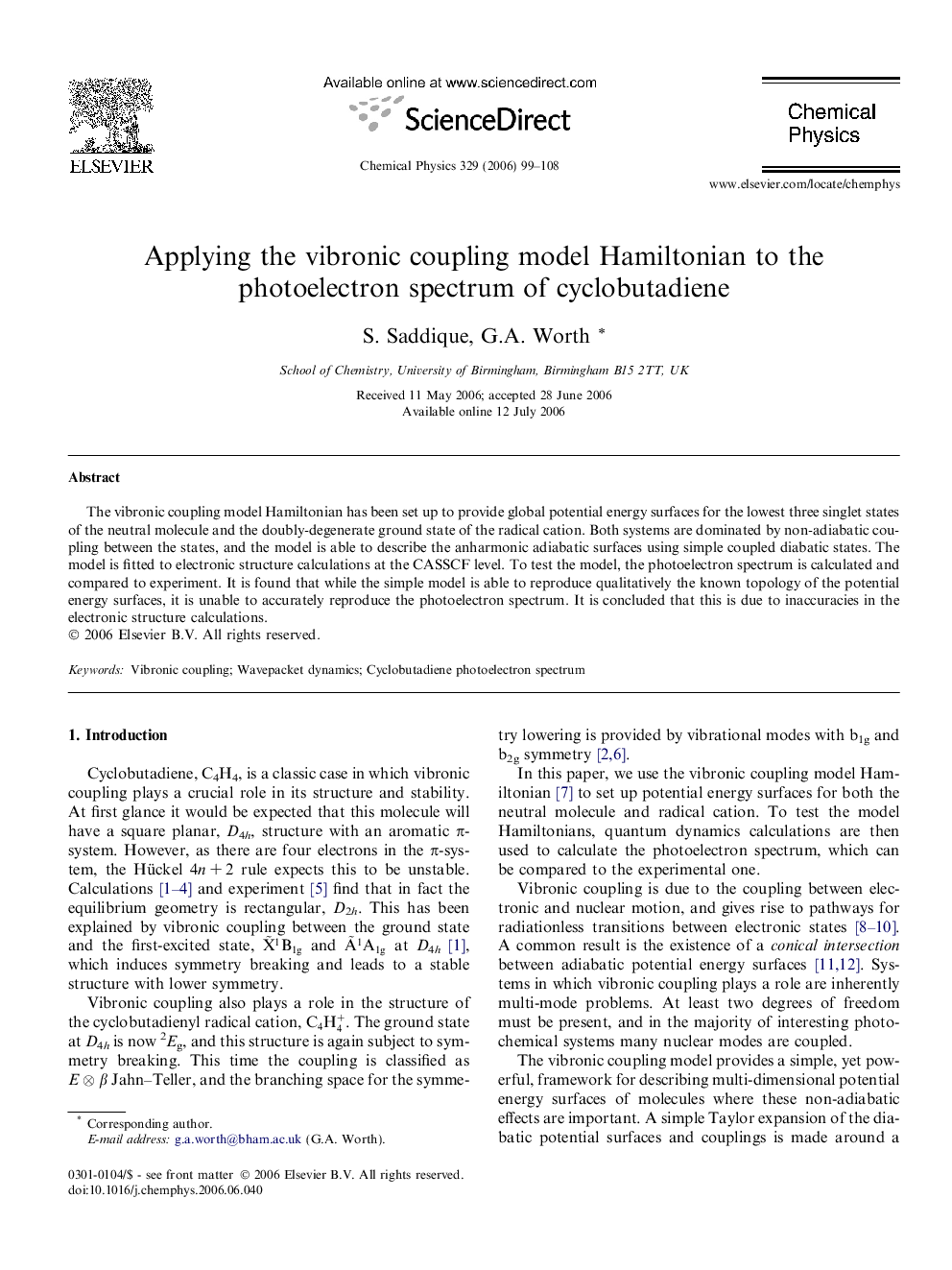| Article ID | Journal | Published Year | Pages | File Type |
|---|---|---|---|---|
| 5376792 | Chemical Physics | 2006 | 10 Pages |
Abstract
The vibronic coupling model Hamiltonian has been set up to provide global potential energy surfaces for the lowest three singlet states of the neutral molecule and the doubly-degenerate ground state of the radical cation. Both systems are dominated by non-adiabatic coupling between the states, and the model is able to describe the anharmonic adiabatic surfaces using simple coupled diabatic states. The model is fitted to electronic structure calculations at the CASSCF level. To test the model, the photoelectron spectrum is calculated and compared to experiment. It is found that while the simple model is able to reproduce qualitatively the known topology of the potential energy surfaces, it is unable to accurately reproduce the photoelectron spectrum. It is concluded that this is due to inaccuracies in the electronic structure calculations.
Keywords
Related Topics
Physical Sciences and Engineering
Chemistry
Physical and Theoretical Chemistry
Authors
S. Saddique, G.A. Worth,
